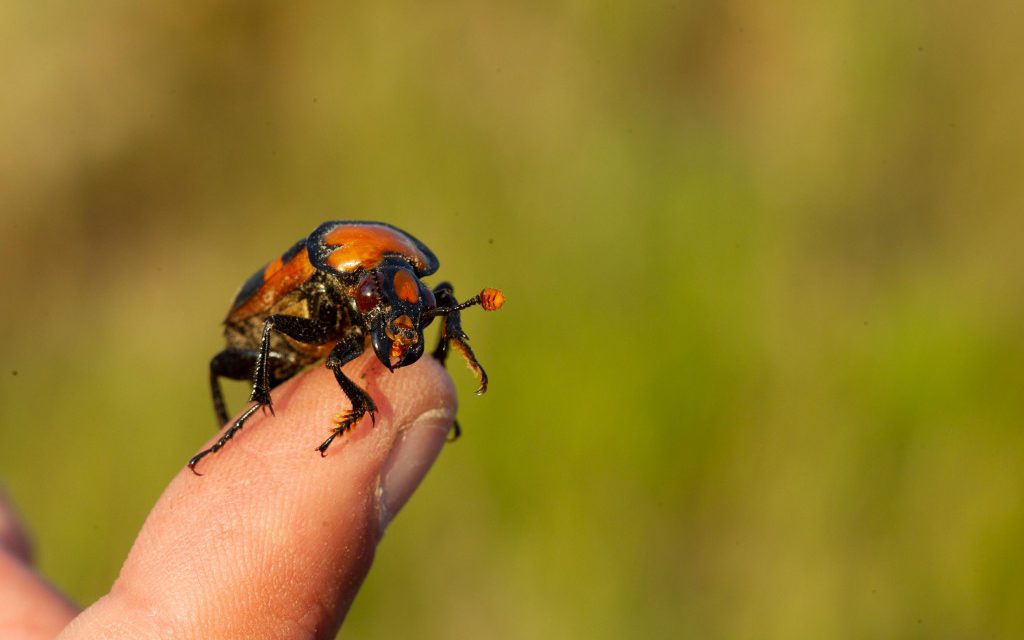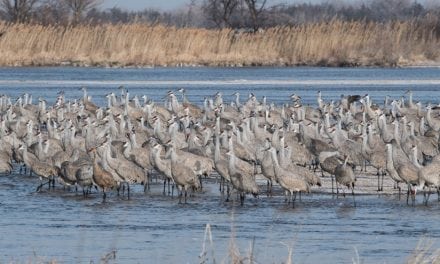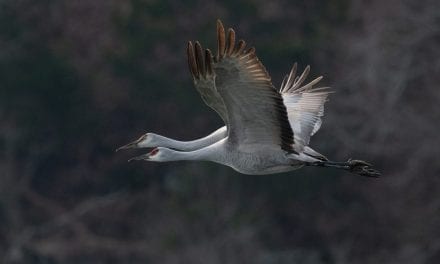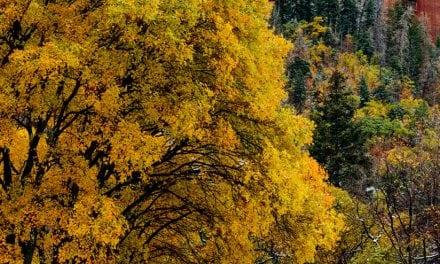Nebraska Game and Parks assists in collecting American burying beetles for Ohio reintroductions
Enlarge
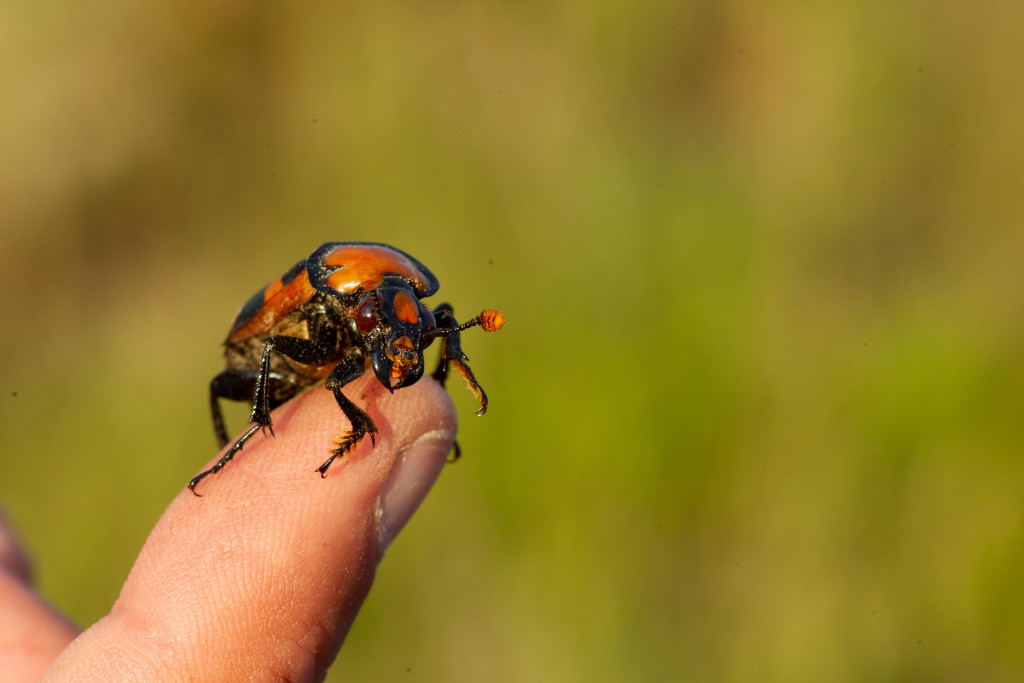
By Shaun Dunn, Zoologist
This summer, the Nebraska Game and Parks Commission and partner biologists led and participated in several trapping efforts for the federally threatened American burying beetle (Nicrophorus americanus) in the Loess Canyons and Sandhills regions of the state. The populations in these two areas are among the largest concentrations of American burying beetles in the world. Efforts to monitor their numbers and distribution have been ongoing for decades.
A recent addition to Nebraska’s monitoring efforts is working with the Ohio Recovery Team on American burying beetle reintroduction. The Ohio Recovery Team is a multi-agency effort including the Cincinnati Zoo and Botanical Garden, The Wilds, the Ohio Department of Natural Resources, the U.S. Fish and Wildlife Service, and since 2015, the Nebraska Game and Parks Commission. In the past, Game and Park’s involvement primarily consisted of permitting and other logistical support, as needed. However, this year’s trapping efforts were led by the Commission, and 30 pairs of American burying beetles were provided to the Ohio Recovery Team.
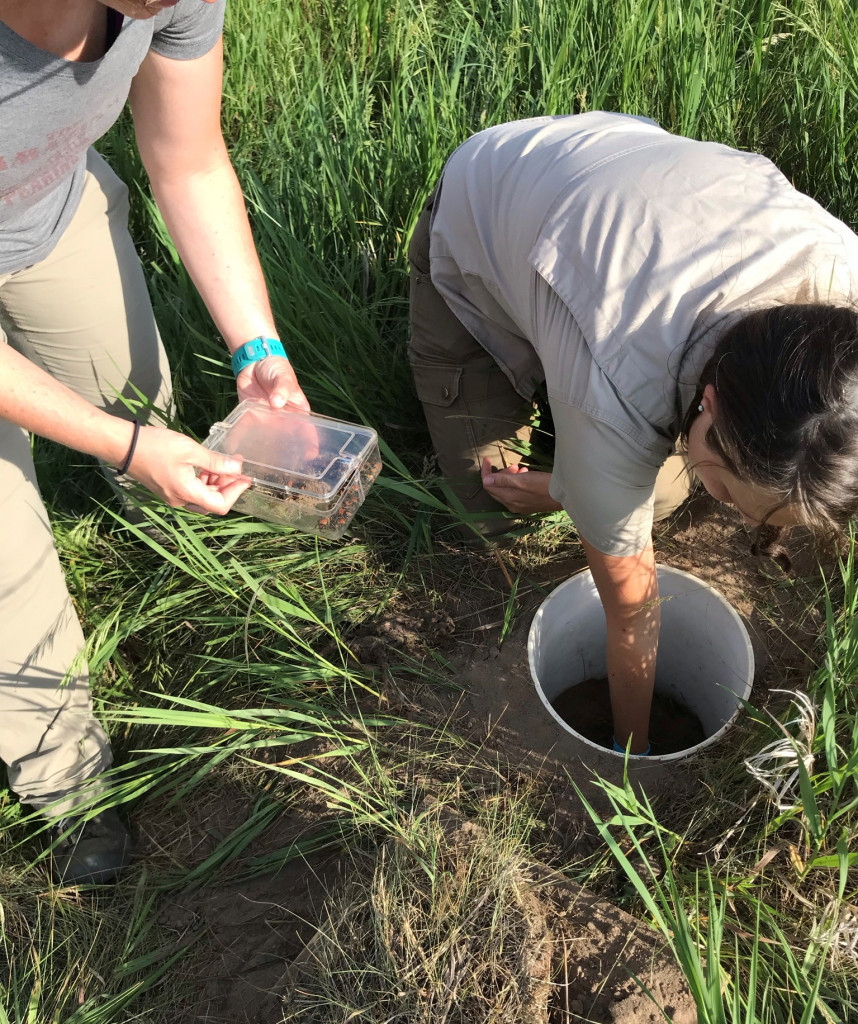
The beetle’s range once covered most of the central and eastern United States and was documented in 35 states. But due to declines in numbers and distribution, the American burying beetle became the first insect listed under the federal Endangered Species Act in 1989 . In 1998, the first beetles were reintroduced into Ohio using individuals captured in Arkansas. Unfortunately, evidence of successful breeding and overwintering of reintroduced beetles in Ohio remained inconclusive for years. One hypothesis is the beetles from Arkansas did not have enough cold tolerance to survive Ohio’s winters. Therefore, the decision was made to collect individuals from Nebraska for reintroduction.
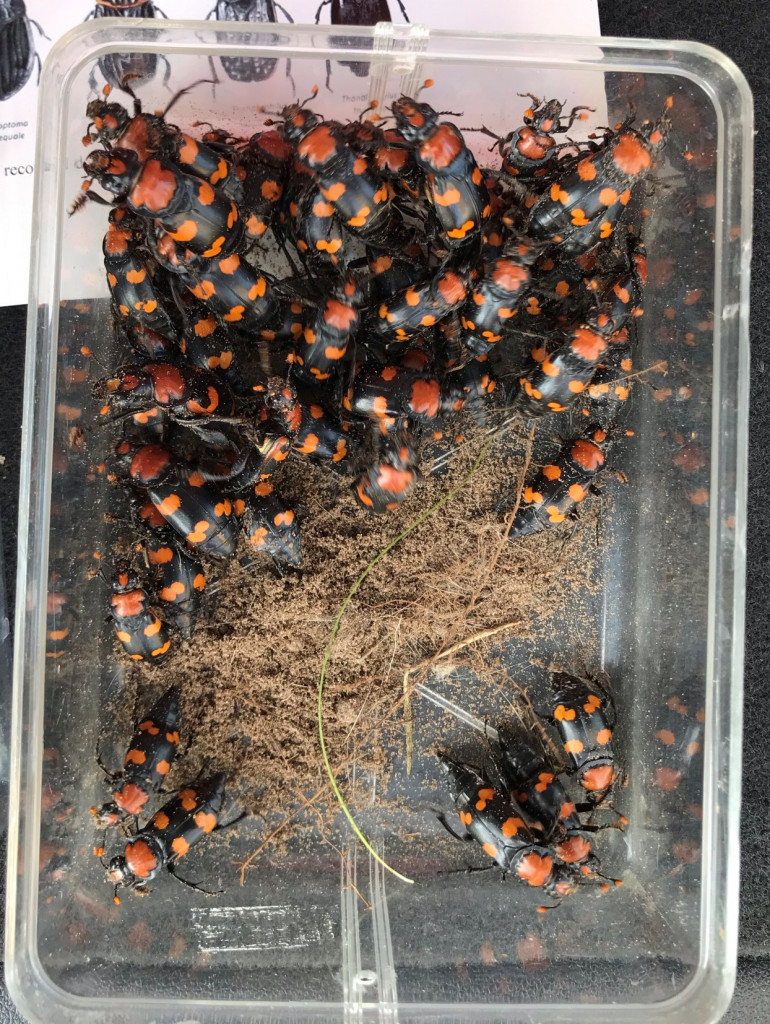
In 2015, 30 pairs of American burying beetles were transferred from the Nebraska Sandhills to Ohio for breeding and reintroduction. Nebraska has continued to support Ohio’s reintroduction efforts every year (with the exception of 2020) and has transferred 286 beetles total. The Ohio Recovery Team maintains multiple breeding programs to supply its reintroduction efforts and the beetles from Nebraska increase the genetic diversity of their reintroduction efforts. The successful overwintering of reintroduced American burying beetle in Ohio was undocumented until 2020 when the first beetles were found to have successfully overwintered and were captured in two separate locations by The Wilds and the Cincinnati Zoo.
Nebraska will continue to collaborate with the Ohio Recovery Team to support their American burying beetle reintroduction efforts, but it seems they may not need our assistance much longer. ■
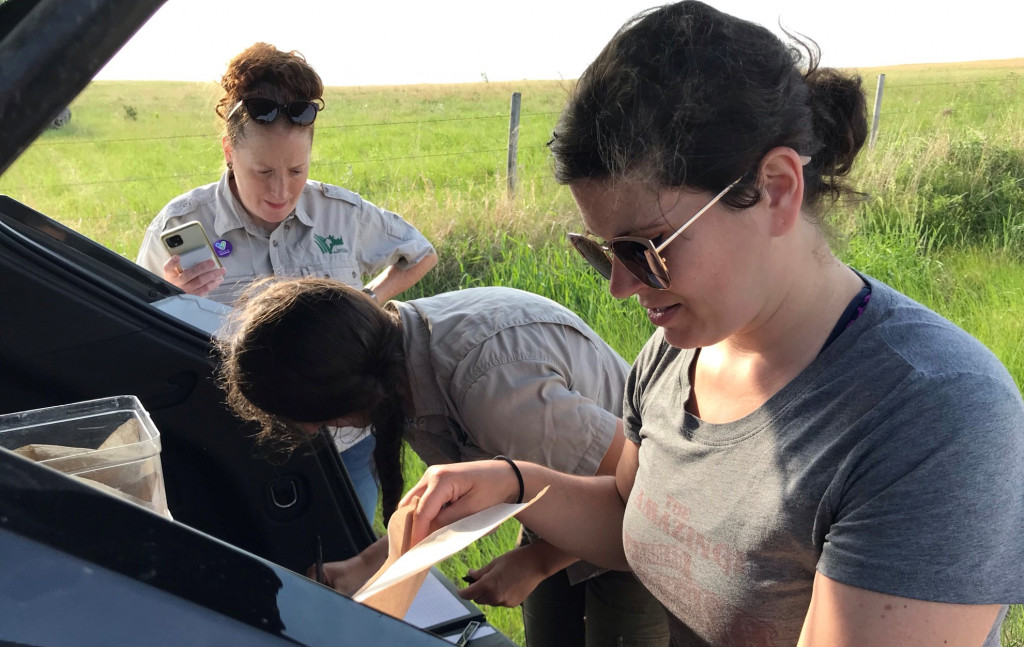
The post American Burying Beetle Reintroduction appeared first on Nebraskaland Magazine.

